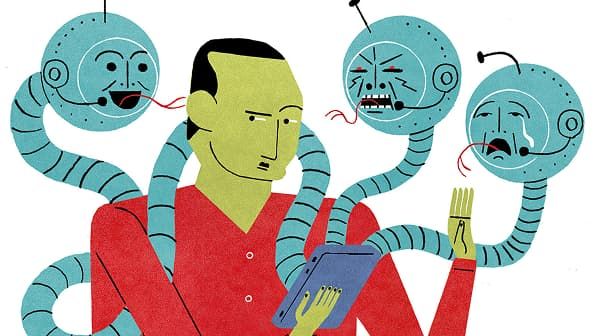With the launch of iOS 26, Apple is making its native generative models—the backbone of Apple Intelligence—available to third-party apps through the new Foundation Models framework. What this means is that your AI capability on your iPhone no longer lies in Siri and system features alone—it can also lie in the apps you interact with every day, but keep private and execute without uploading your data to distant servers. Following are five real, modern-day iPhone apps that now use Apple Intelligence to make your daily life smarter, more personal, and more productive.
A Brief Guide to Construction Jobs

1. SmartGym
If exercise is a puzzle, SmartGym now interprets your idea as a whole workout. With Apple’s Foundation Models, you can simply type or speak something like “30-minute dumbbell legs and core challenge” and SmartGym will instantly generate a structured set of exercises, sets, rest periods, and even adapt based on what equipment you have or if you have a history. With time, the app improves its recommendations: it will suggest when to lift weights, when to switch exercises, and offer monthly reports with textual descriptions. Since all this happens on-device, the app suggests without having to make calls to remote servers.
2. Stoic
Stoic has been a reliable wellness journal partner for many years; now it adds Apple Intelligence to guide your reflection. The app reads what you’ve been writing recently, and your mood, and reacts with contextual questions designed to push you toward insight, appreciation, or further digging. It even helps summarize weeks or months of journal pages into readable summaries so you can revisit themes or emotional patterns you might’ve forgotten. Because the AI is kept locally, none of your private writing ever goes out on to the internet.
3. Stuff
The simple-looking list app Stuff now does a lot more than enable you to check boxes. Thanks to Foundation Models integration, Stuff can process natural language input and scan modes: type “Call Linda next Wednesday” or take a photo of scribbled paper, and it converts your input to a formatted task with date, priority, and category. The app’s “Listen Mode” and “Scan Mode” facilitate voice input or image-to-actionable to-dos without ever leaving the device.
4. VLLO
Video editing is labor, specifically when it comes to choosing what to highlight and what music will be effective. VLLO now relies on Apple Intelligence to help: it analyzes your video for faces, tempo, and scene significance, and then suggests highlight reels, background music ideas, captions, and stylistic overlays. You can use them, edit, or override, but the point is that it reduces grunt work. This level of scene-aware guidance—blending Apple’s Vision and Foundation Models—is now built directly into the app itself.
5. OmniFocus 4
If you rely on OmniFocus for hardcore productivity, its new Apple Intelligence features may surprise you. iOS 26 also allows OmniFocus to generate automatic suggested projects or next actions: for instance, if you mark a “Trip to Paris” project, OmniFocus can auto-suggest like “Book museum tickets,” “Choose hotel neighborhood,” or “Pack for weather.” It can even deduce due dates or tags based on context—e.g., suggesting “Travel” tags or suggesting that you pack in advance of departure on a trip. Because this intelligence is run locally on the device, your personal planning habits are not shared.
Why this Shift Matters — and What to Watch
These apps represent the tip of the spear of a future wave of iPhone smarts. Traditionally, much mobile AI functionality relies on cloud servers, with information being ferried back and forth. But Apple’s Foundation Models system requires privacy, by performing generative work entirely on device, with no additional inference cost. That provides for interactive, personalized AI even without continuous network connection.
What’s exciting is that you no longer need to think of AI as this separate “assistant” in apps anymore—your apps are intelligent. And the more developers adopt Apple Intelligence, the less the line between app and assistant exists, and productivity, reflection, creativity, and organization in your daily life feel more intuitive and personal than ever.


Guess you like
-

What RV Passengers Should Never Attempt to Do on the Run
-

Smart and Affordable Elevator Choices for Homeowners
-

Midsize Pickup Trucks That Deliver Real Towing Muscle
-

A Comprehensive Guide to Secure Credential Management using Apple Passwords
-

Why Chatbots Make Things Up Now and Then and What That Portends for Us
-

Strategies and Tools to Ensure Comprehensive Data Security in 2025
Trending
-
 1
1A Smarter Way to Surf the Web with ChatGPT Atlas
-
 2
25 Apps Using Apple Intelligence to Transform Your Daily Life
-
 3
3Five AirPods Features That Make Everyday Listening Smarter and More Seamless
-
 4
4Battlefield 6 Beginner Tips for Winning Fights and Surviving Each Mode
-
 5
5Your Chatbot AIs Could Soon Determine What You View on Facebook and Instagram
-
 6
6How Seam Sealer Quietly Keeps Your Car Alive


